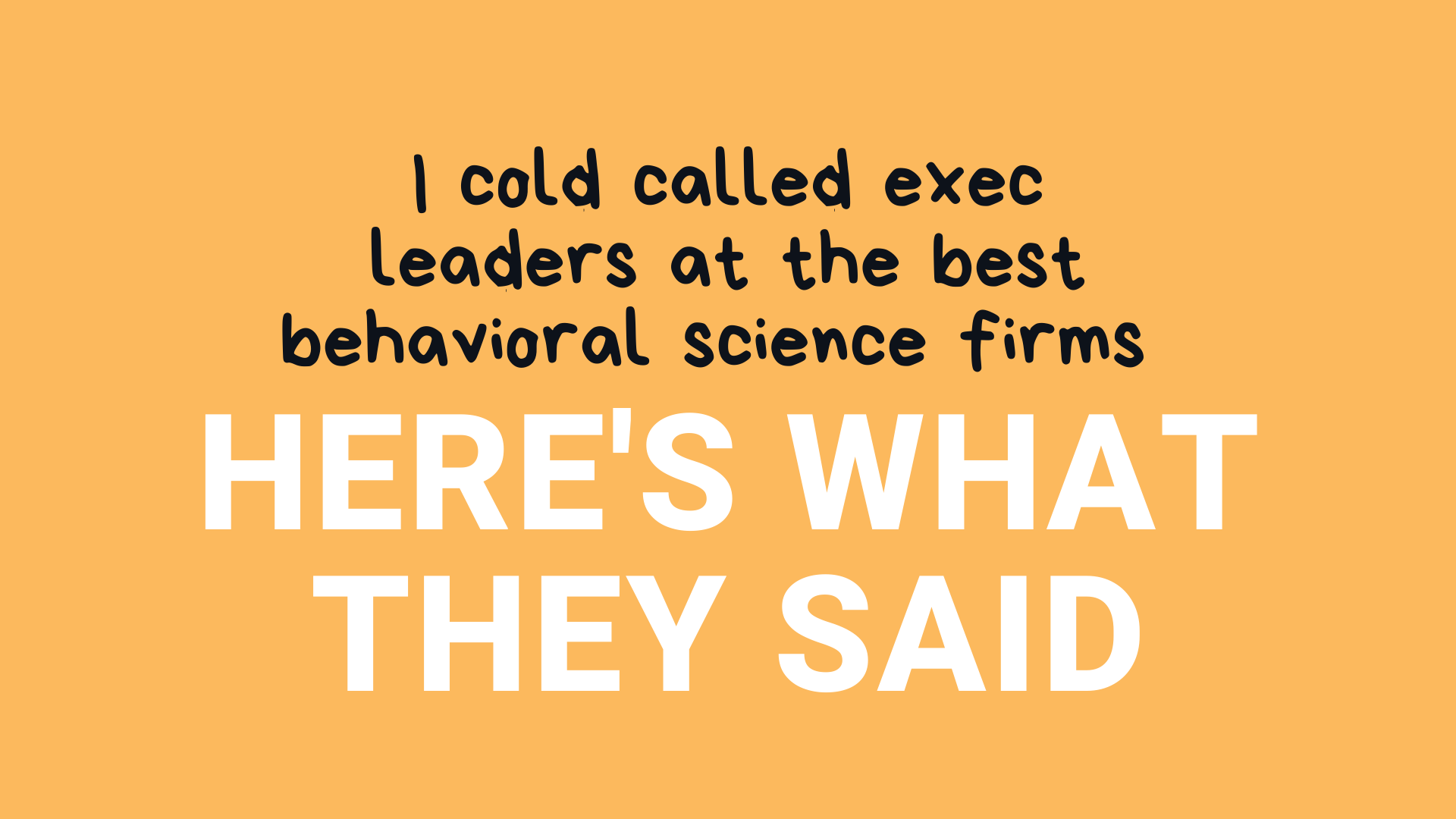What executive leaders at the best behavioral science firms say about how they got where they are today — and how you can, too.
In the last two decades, behavioral science has stepped out of the academia driven university halls and into, well, pretty much everywhere. The field, which encompasses economics, psychology, and neuroscience and works to understand why people behave the way they do, now boasts over 300 behavioral teams across a variety of teams and organizations. Everyone from policy makers to business leaders are catching on to the competitive edge offered by the field and asking “how can I play the behavioral science game?”
At SnapHabit, we're building an experience to better help people live more fulfilling lives. It's a pursuit steeped in behavioral science, and yet no one on our team has formal behavioral science training.
We're inadvertently operating in the field, but I wanted to better understand how others got their start. I spoke to leaders from ideas42, Behavioral, Insights Team, The Behavioralist, and other firms and here's what I found.
- It’s a field driven by “academic experts.”
- You either stumble upon behavioral science unexpectedly or fight for it in the form of a dissertation.
As an undergraduate, the PhD was tabled for now. As for the stumbling, it felt pretty hard to “stumble” when I was actively pursuing it at every corner. My inbox was filled with the best behavioral science newsletters, my reading list was too long to ever be crossed off, and I aggressively searched Linkedin to understand how these expert behavioral scientists got their start.
I am not the stumbling type. When the answer was stumble or get a PhD, I didn't know what to do next. So, I kept asking questions. In effort to spare you from the personal cold call anxiety, here's what they said.
Q: From my Linkedin stalking, the field feels pretty academia rich. How can one get a foot in the door*?
*without going to grad school first.
A: Start where you are. Start with curiosity. As scary as that sounds, the right questions and a keen interest in people can drag your feet right through the door of behavioral science.
Surprisingly (and comfortingly), most of the people I spoke with did not answer this question with “I don’t know; I have a PhD in Behavioral Economics.” Instead, most said “actually, it’s really funny; I kind of just stumbled into the world of behavioral science.”
There it was again, “stumble.” Though the answer did not satisfy my type-A, one-track brain, it did bring a bit of excitement into the planning process.
Across all my conversations, it was evident that the field of behavioral science is interdisciplinary at its core. Community health, public policy reform, environmentalism, and education were just a few of the fields the leaders I spoke to named their “start.”
One explained that, for her, a career in behavioral science was the best of both worlds, saying “it allowed me to marry my interests of social impact and science.”
A lead at Facebook explained that applying these learnings at such a large scale "makes the work we do feel really important. We do work that makes a difference in how people communicate, connect, perceive each other."
No matter where they got their start, all shared this sentiment: "the work feels relevant" because it touches everything, and that's what keeps them coming back even, and especially, as the field evolves.
Q: But I'm an undergrad. What can I learn?
A: Anything you set yourself up to learn.
Though many universities still do not offer an established behavioral science or behavioral economics program, that does not mean that you can’t build a robust behavioral science experience in undergrad. In fact, my conversations argued that undergrad is the best time to learn about it because you have complete agency over your learning.
- Take initiative in your undergraduate education. Don’t have an established program? Make one: tailor classes towards economics, psychology, and sociology.
- Create your own projects. A business school professor once told me that “you can pick the topic of almost any class.” If a class includes a paper, presentation, or research project, relate it to your personal interest and add it to your portfolio. Behavioral science is about people, and people can be applied to nearly any project!
- Talk to people. “The thing that sets your experience apart is having mentors, people to champion you, especially post docs or grad students because they actually have the time. Don’t go to the top person but go where one on one experience is.”
- Not all learning happens in the classroom. One behavioral science executive I spoke to said “working in a restaurant was the best study of people I have completed.” Another urged, “Do your own research! Start your own project! People are all around us.” A grade is not needed to confirm learning. The key is being aware enough to explain how and what you learned.
Q: What do you look for when hiring entry-level teammates?
A: People-person(s) who are eager to take on new perspectives, ask better questions, and are able to work across disciplines.
The work is two part: quantitative and qualitative. From the quantitative perspective, research was the obvious route. Many urged to reach out to professors, get into labs, and gain experience working in R and Stata.
"Just email and ask, you'd be surprised what they'll let you do," one leader urged.
Still, the quantitative push was always coupled with, “Anyone can be good at research, but also have to be good at the people side.”
The desired qualities on the people side stood out to me the most:
- Demonstrated experiences across disciplines, while understanding the strengths and limitations in own field (does not approach issues from just research or just design)
- Highly collaborative, team-oriented
- Experience in public speaking, writing, and storytelling
- Flexible and adaptable, not tied to an end-answer
- Project management experience
- Market research experience
Q: It's not new anymore; behavioral science is everywhere. What does that mean for students today?
A: Keep calling, keep stumbling.
For most of the people I spoke with, when they were in college, kids weren’t reading the now-classic behavioral science reads and Dan Airely was not a household name (ok, maybe he still only is in my house?). For them, stumbling really was the most viable choice to enter the field.
Now though, organizations everywhere are starting up behavioral science teams. So, what does this mean for someone looking to get into the (not-so) new field? Most said, “keep doing what you’re doing.”
I might have preferred a step-by-guide on how to get where they were, but it was the same answer at the end of each call: keep calling.
Now I see that they didn't answer with a 1o-step plan because that isn't the answer. And maybe that's the best part of behavioral science: it's a field built for those who are excited enough to keep calling, driven enough to keep asking, and inquisitive enough to keep listening to stories to better understand.
Next step in attaining your pseudo-PhD in behavioral science?
Draft a cold call email, find people to message on Linkedin, take a deep breath, don't be creepy, and hit send.

